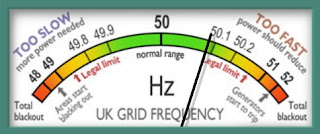It is sometimes said that there is not enough energy
consumed by wet appliances to eliminate 7GW of peak consumption by time-shifting
them alone. I leave you to judge.
The trend of wet appliances’ consumption has been inexorably
upwards, and is now second only to consumer electronics. Much of the increase
is due to an undesirable increase in the use of tumble dryers, but I am not
here to preach austerity. If you live in a flat or gardenless house, it may be
the only realistic option.
Reading off the above graph, we have a Mtoe figure for each appliance type:
APPLIANCE TYPE
|
Mtoe 2014
|
GWh (Mtoe x 11,630)
|
PERCENT OF TOTAL
|
Light
|
1.0
|
11,630
|
14.2
|
Cold
|
1.1
|
12,793
|
15.7
|
Wet
|
1.3
|
15,119
|
18.5
|
Consumer Electronics
|
1.8
|
20,934
|
25.7
|
Home Computing
|
0.6
|
6,978
|
8.5
|
Cooking
|
1.2
|
13,956
|
17.1
|
TOTAL
|
7.0
|
81,410
|
100
|
There are around 80 winter days when it is desirable to
reduce peak consumption by up to 7GW and by around 18GWh spread over the 5 hours of the peak, so
by a total of 80x18=1440 GWh/year. This is 1.7% of total annual domestic
consumption, and 9.5% of total annual wet consumption.
There are of course other candidates for time-shifted
consumption as well as wet appliances. Cold devices (mainly fridges and freezers in
UK) and increasingly home computing (laptops, smartphones and tablets all have
batteries) are if anything even less time-sensitive in direct grid consumption
than wet appliances, and are now already 24% of the total vs wet appliances
18.5%.
The reason we are not focussing on them is the relatively low
consumption per device. A typical house may have three wet appliances and ten
or more cold and computing ones.
Would you rather go for the wet or the cold and computing!
It’s up to you. Both is best!






























